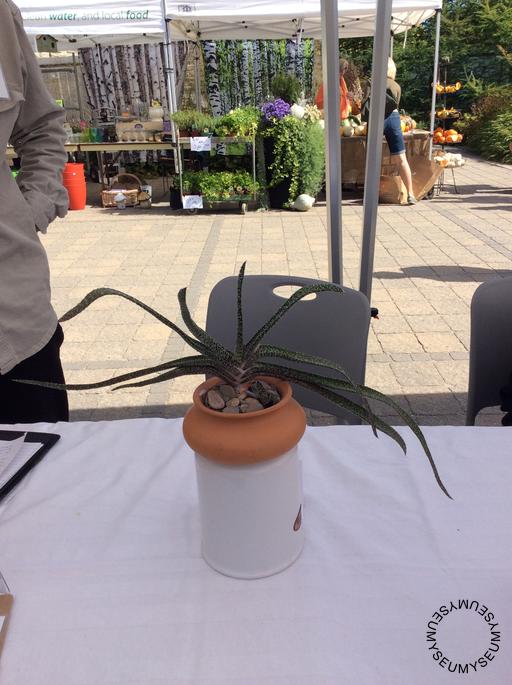Submitted by Graham on Sep, 26
Gastera Carinat Var. Verrucosa
This is an offshoot from a specimen brought to Toronto from Vienna during World War II. Graham received the plant from a stranger in the Toronto neighbourhood, the Annex. She had put a pencil cactus out for someone to take and then they started discussing all her plants. She ripped another one from a pot and told him to take this one too. She gave him the plant and he helped her with her computer in exchange. Her name was Rusty. He tried to go back to get more details a week ago but she wasn't home. Graham named the plant Cecilia, here at the Toronto Botanical Gardens. The plant is now sprouting a baby. He plans to pass it on to someone else when the baby gets bigger. He is not a plant talker. The plant came with "scale", a disease. He treated it by removing the scale. It's interesting how in the sharing of plants you also share the plant's pests. Graham has now had the plant for 2 months. The first thing he did when he got it was identify the species and research its origin. He discovered that it was one of the first succulents brought to Europe from South Africa. It's from the western Cape of South Africa. The first successful specimen that was propagated in Europe. It was successfully grown in the Netherlands from 1688-1697.
How is this object or story important to you?
I love the connection between the plants that you care for and live with, and the memories and stories that you tell about them. I am interested in the global movements of plants.
What does it add to the story of Toronto?
I think it's an interesting object because it represents movement from Europe to Toronto from World War II, but also because it was something that the family thought was important to bring. It enriches Toronto's botanical history because it tells the story of migration during World War II through a living object, which set up a chain of sharing.
How old do you think it is?
Youngest it could be would be about 78-80 years old.
